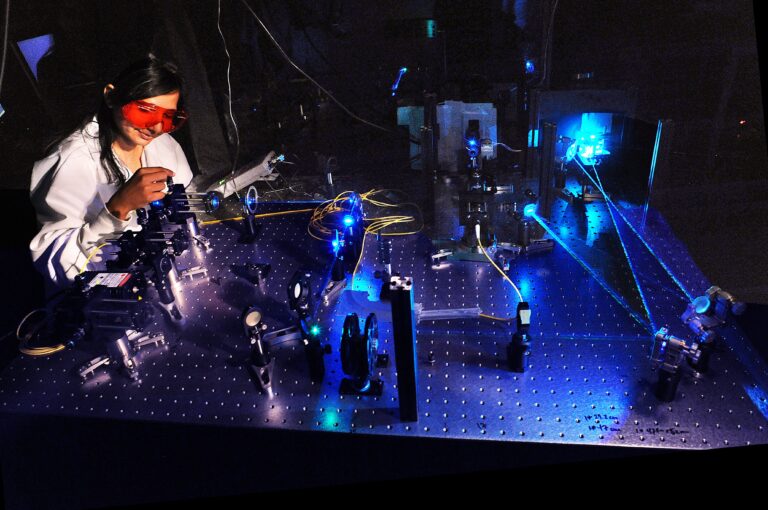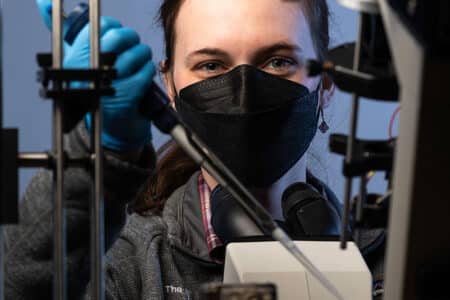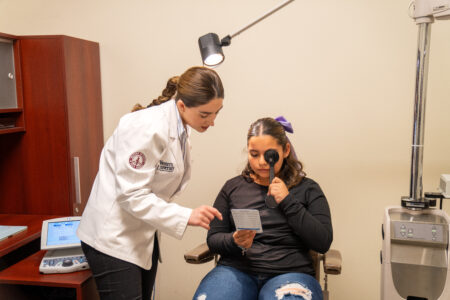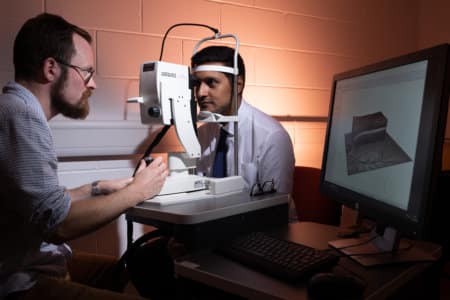
Optics and photonics is a thriving trillion-dollar industry in the US, with the global market size projected to grow from US$983.51 billion in 2024 to US$1.64 trillion by 2032. With promising job prospects, this field offers many opportunities for professionals across various industries and academic settings.
However, the industry is evolving quickly, with new technologies and applications emerging regularly. Many senior roles in optics and photonics demand highly specialised skills and knowledge as well, particularly in areas like integrated photonics. According to the SPIE Global Industry Report 2024, many employers reported that fewer than half of recent graduates are fully prepared with the soft skills required for success at their companies.
The good news is some universities are great at preparing students for a successful career in optics and photonics. With tailored programmes designed to equip students with both the technical knowledge and soft skills needed to advance in industry and academia, these institutions can set you on the path to success.

The College of Optics and Photonics’s researchers are advancing optics and photonics through advanced laser technology, optical fibres, and integrated photonics. Source: University of Central Florida
University of Central Florida
If you’re looking for quality optics and photonics education, look no further than The College of Optics and Photonics, at the University of Central Florida. Ranked among the top institutions worldwide for optics education and research, CREOL has been a pioneering force since its establishment in 1987. Originally founded as the Centre for Research in Electro-Optics and Lasers, CREOL became the first graduate college for this field in the US in 2004.
Today, it offers interdisciplinary graduate certificate programmes, master’s programmes (available online), and PhD programmes that will make you highly sought after by top companies like Apple, Microsoft, Google and Facebook. The Masters of Science (MS) in Optics programme, with both thesis and non-thesis options available, is ideal for those seeking a career in industry or preparing for a PhD degree. Many MS graduates continue with CREOL’s PhD, a programme that empowers students to conduct scholarly, fundamental and applied research while participating in the development of technology-based industries.
With a vision to lead in education, research, and innovation, CREOL’s 35 core faculty members, about 60 research scientists and postdoctoral fellows, and over 130 graduate students and 170 undergraduate students engage in cutting-edge research areas such as optical fibre fabrication, quantum information systems, integrated photonics, and more. Supported by approximately US$20 million in annual research funding, CREOL produces around 200 papers yearly, making significant contributions to the field. Over 280 patents, 29 spin-off companies, and an Industrial Affiliates Programme with over 50 member companies highlight CREOL’s strong industry partnerships. Learn more about how CREOL is leading the nation in optics and photonics research and education.

Source: The Institute of Optics
University of Rochester
Every year, talented students from around the world join The Institute of Optics at the University of Rochester to pursue a PhD programme that prepares them to carry out independent, creative research in an industrial, academic, or government setting. For the next five or more years, they undertake a combination of research, coursework, teaching assistantships, and thesis work.
What’s special about this programme is it offers two types of support: flexibility in choosing a research area and financial support. Students are not assigned to a research group upon admission. They can explore various groups before selecting a specific area with an advisor within optics after completing two semesters. Tuition is free for up to 90 credits, and each PhD student in a research group earns a stipend, which includes health and childcare benefits.
“My advisor and committee members nurtured my professional development by challenging my critical thinking skills, while always having an open door when I needed support,” says graduate Kaitlin Dunn. “Most importantly, the collaborative culture at the Institute instilled in me the value of having a professional and academic community of peers where I will always feel at home.”
PhD students at the Institute of Optics have access to the optics and photonics industry too. The Industrial Associates Programme provides students with opportunities to present their research to company representatives, faculty and guests — encounters which have launched hundreds of successful careers and scientific discoveries. During the bi-annual Industrial Associates meetings, students take part in poster sessions, career fairs, job interviews as well as formal and casual networking opportunities.

The diverse community at the Optoelectronics Research Centre (ORC) at the University of Southampton is made up of 300 staff and students from over 40 nationalities. Source: University of Southampton
University of Southampton
Based at the University of Southampton’s Optoelectronics Research Centre (ORC), the one-year MSc Optical Engineering programme is a great programme for anyone who wants to work in photonics with access to professional level equipment, software, and fabrication methodologies. It covers the basics of modern optical and photonic engineering in communications, computing and sensors, with optional modules in optical communications, silicon photonics, optical sensors, and advanced laser techniques.
As a student here, you’ll experience the best of both worlds with a programme that combines in-depth theoretical knowledge with hands-on practical experience. You’ll be assessed by exams, coursework assignments, presentations, reports and portfolios, and projects. A final project dissertation with a maximum of 15,000 words and a conference style final project presentation to all the students on the programme are required.
The MSc is a stepping stone to the growing number of jobs in photonics in a sector that produces 14.5 billion pounds in output every year in the UK. Graduates qualify for roles like photonics engineers or laser scientists, though Southampton graduates can be found in various sectors. They are now leaders in industrial photonics research and development across the globe, running their own photonics businesses, and pursuing their research at PhD level.
*Some of the institutions featured in this article are commercial partners of Study International.










